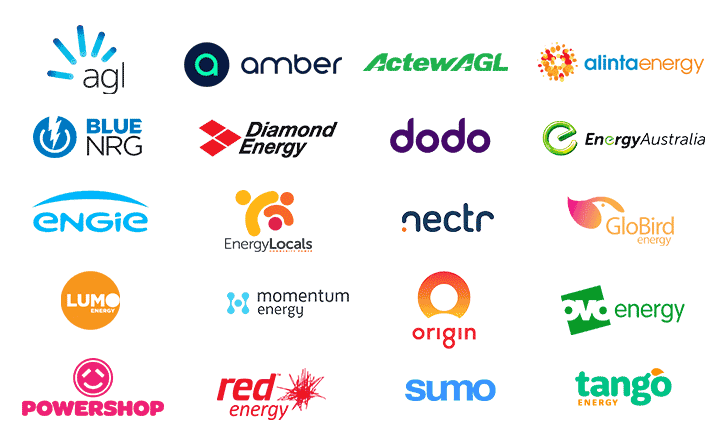Market-linked electricity plans can work out well. But there are some challenges. I’ll explain the important things to know upfront and how to manage the risks.
When you understand what it takes to get the most value from a market-linked electricity plan, then you can decide if it’s right for your household and whether the extra rewards are worth it.Ups and downs
If you choose a market-linked energy plan, your electricity rates will change over the day, following the wholesale spot price in the National Electricity Market (NEM). Spot prices change depending on supply and demand and can be volatile. Households on market-linked plans can expect higher prices and volatility during heatwaves, cold winter mornings, and evenings. So, moving to a market-linked plan is not for the faint-hearted or households without some degree of price protection (essentially a solar battery setup). So why would anyone choose a market-linked plan?
Higher potential savings when you get it right
These highs and lows mean that a market-linked plan can offer higher potential savings (or even income/credits) than standard retail offers. Generally, they allow households to buy electricity at a lower rate in the middle of the day than other retail plans. Again, in general, they provide higher feed-in tariffs in the early morning and evenings than other retail plans. That means that if you have a battery, there are regular opportunities to arbitrage the market, i.e. buy from the grid and sell at a higher price. Alternatively, consumers can store their excess solar and export it later to achieve a higher feed-in tariff. You can read about the usage rates and feed-in tariffs our family experienced in 2022.
Currently, Amber is the only retailer offering a direct market-linked plan.
Key challenges and how to address them
It’s important to understand the challenges of being on a market-lined plan. We’ve compiled a short list based on our real world experience of being an Amber customer for 12 months.
1. Avoid peak price spikes with a battery
Owning a battery is almost mandatory to avoid peak rates, particularly in the cooler months from May to July. Amber also strongly advocates for its users to add battery storage. That’s because a battery can effectively insulate households from short periods of high prices – which might be as high as $2-3 a kWh or more. Equally, a battery can earn income by selling stored energy when prices are high.
Peak rate spikes often occur in winter. The challenge is most homes have less excess solar to charge their batteries. To address this, consider charging your battery from the grid to ensure it is full to cover your own peak needs. Ideally, you’ll have spare battery capacity to take advantage of opportunities to discharge into the grid when prices are high.
2. Manage your solar exports
In winter, the daytime feed-in tariffs will generally be higher, so export excess solar as you usually would. However, you’ll want to make the following adjustments because FITs are much lower during the rest of the year.
Feed-in tariffs are frequently low or negative in autumn, spring and summer due to increased generation from households, businesses and utility solar. Without sufficient battery or household loads, you may well be exporting when feed-in tariffs are negative. So, in effect, you’ll be paying for the privilege of exporting unwanted power. To address this, suck your solar into the battery, and shift everything you can to run from 10 am to 2 pm. Pool pumps, air conditioning, hot water, or anything you can operate to ensure you use as much of your solar and limit exports during this time.
On days when there are many hours of negative feed-in tariffs, it’s best to have a near-empty battery at the start of each day. This way, you can minimise or avoid any costs for exporting to the grid around midday.
3. Go automatic
5 and 30 minute price changes mean some automation is vital to turn on or off appliances, EV charging, and battery charging/discharging based on the current price. Automation avoids the time and effort of checking prices constantly. Applications that can assist include Amber’s SmartShift solution and third-party solutions such as ned or Charge HQ. Or you could build your own, using Home Assistant or node-red etc.
High price periods are generally short – as little as 5 minutes. So automation will ensure you can discharge quickly to the grid and maximise returns.
Sometimes, there is insufficient price spread (difference between buy and sell rates) to arbitrage the market. However, this has been a rare situation in 2022, with elevated evening prices due to high international gas and coal costs.
Price protection build-in
There is a degree of price protection built into Amber’s plan. The retailer sets a maximum rate their customers will pay over 12 months. This is generally at or just above the VDO/DMO. So, the downside is risk is capped across the year. Of course, individual billing periods could see big spikes.
Overcoming the challenges
Our experience over the last 12 months on a market-linked plan has been very rewarding. There are two essentials to make a market-linked plan work well. You’ll need sufficient battery storage. Plus, some automation to manage your energy usage and/or solar/battery inverters.
Battery essentials
In terms of storage, ideally, you would have sufficient capacity to store most of what your home can generate. For an average fully-electric home with a 6kW solar PV system, we suggest at least 15-20kWh storage capacity. This battery size means you can store at least half of the maximum your PV system can generate. Plus, this capacity gives space to export into the grid when market rates are high, leaving enough room to cover your energy loads through the night.
Make it simple
We expect the popularity of market-linked offers to grow significantly when automations become more accessible and capable of controlling more appliances/battery types. Amber plans to broaden the brands and appliances controlled by its SmartShift application. Plus, more third-party automation solutions are developing around the Amber platform. This will reduce the time, risk and complexity of being on a market-linked plan whilst maintaining most of the financial benefits.
In time, we hope more retailers offer similar market-linked plans with their automation solutions and price protections to empower households to take control of their home energy system. After all, if we want households to take a greater role in increasing our use of renewables and reducing peak demand and emissions from fossil fuel generation, a market-linked plan directly encourages this.
I’ve compiled the list of shortcuts and hacks we’ve developed over the last year to make the most of Amber. and to save time. You can read “Hacking Amber for bigger returns” for my best tips.



